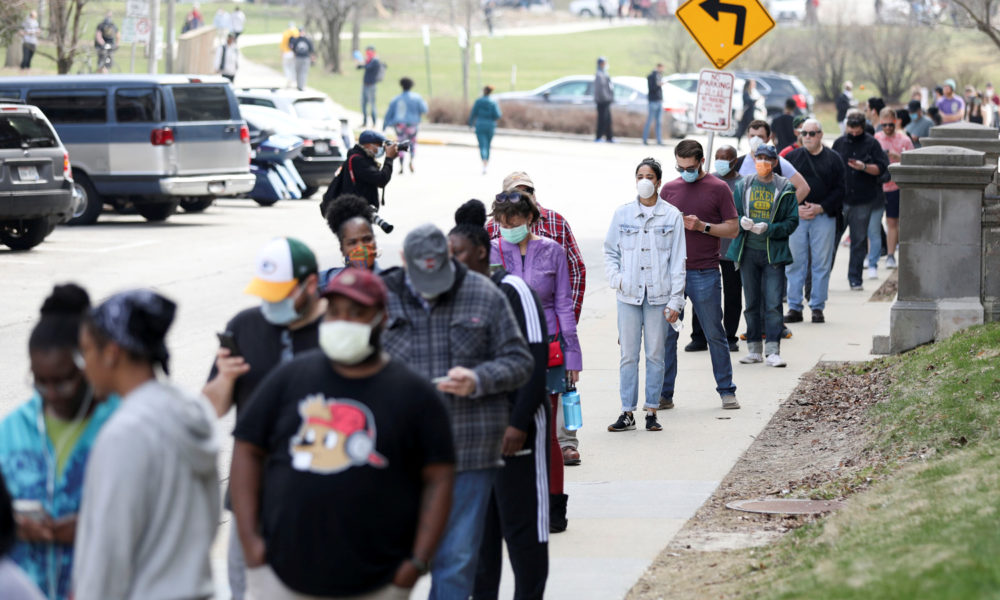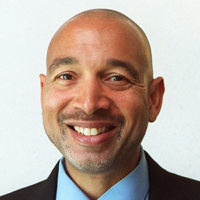As much as the denial of science is a hallmark of the Trump administration and the Republican Party, Wisconsin Republicans took things to a new level with their cynical decision to hold in-person voting in the midst of a deadly pandemic. As my scientist wife, Dr. Michelle Holmes, an epidemiologist at the Harvard School of Public Health, put it, “This isn’t just denial of science. This is pure exploitation of science.”
State Assembly Speaker Robin Vos epitomized the sickening hypocrisy by showing up at his voting station in Burlington Wisconsin—a town of 10,000 people in the southeastern part of the state—with his body draped in full protective gear as if he were ready to perform surgery.
Oblivious to the optics as thousands of frontline health care workers all around the nation are heading into battle trying to save COVID-19 patients with inadequate gear, Vos told the media: “Actually there’s less exposure here than you would get if you went to the grocery store or you went to Walmart or you did any of the many things we have to do to live in the state of Wisconsin. So, I am super proud of the job that they did, and I am glad that we are able to have the election.”
Cynical exploitation
Vos’s suited-up body stood in contrast to the long lines of comparatively unprotected people waiting to vote in Milwaukee. Because the pandemic has hit the city so hard, Milwaukee had only five open polling places, compared to its normal 180. As the lines snaked for blocks, and people waited upwards of three hours to vote, some people wore masks. Many did not. Many did not appear to be six feet apart. Only time will tell the extent of the harm to which these people were exposed.
The scenes of the lines hit me hard because I am from Milwaukee and one of those five polling places, Marshall High School, was my alma mater. “This is just crazy,” voter Clinton Joseph, age 67, told the Milwaukee Journal Sentinel. “There is no way that we should be out here like this. This is a farce.”
It was a farce both for the senseless risks Election Day posed to the people who voted and for the calculated voter suppression designed to encourage so many to stay home and out of the virus’s way. The state has been on a stay-at-home order since late March, but the relative lack of infection and death in whiter suburban and rural areas clearly made Republicans think they could pull off the primary with their voters more resourced to protect themselves while Democratic urban areas literally faced a life-and-death decision to risk infection to vote.
One probable reason for the haste was because a conservative incumbent state supreme court judge was up for re-election. Postponement might have aided the more liberal challenger as Milwaukee was anticipating high turnout for mayoral and country executive races that had African American candidates.
Conservatives also knew that structural inequalities in everyday living make it harder for black people to vote than white people. With coronavirus-crippled Milwaukee down to five polling places, that meant most people had to drive to vote instead of walking to their traditional neighborhood location. But while 94.4 percent of white Wisconsinites have a vehicle, 27 percent of African American households in Milwaukee do not.
Exploiting the crisis at the national level
The fiasco in Wisconsin sadly parallels the exploitation of the coronavirus crisis on the national level. A top example is the Trump administration’s relaxing of pollution enforcement to ease financial burdens on his corporate friends in toxic and fossil fuel industries. That act is a blatant statement that the White House has no regard for the millions of Americans who already live with toxic fumes and facilities, accumulating the very heart and lung diseases (along with diabetes and obesity from being targeted by soda and junk food companies) that set them up for poor outcomes from COVID-19.
But while the build-up of asthma and cardiovascular disease from environmental injustice happens quietly over years, generally out of the sight and mind of the mainstream media, the Wisconsin primary was a freakish experiment in broad daylight. The voters standing in line, with so many of them black, represented an outdoor petri dish.
They were subjects of an electoral Tuskegee Experiment.
In the actual experiment, 600 African American men in Alabama, 399 who had syphilis and 201 who did not, were knowingly treated as guinea pigs, studied without consent or medical treatment for 40 years by the U.S. government until the project was exposed and shut down in 1972. It stands as one of too many examples of medical exploitation of people of color, such as gynecological experiments on enslaved black women, cancer and birth control experiments on Puerto Ricans, sterilization of Native American women and unauthorized use of DNA from diabetic Native Americans.
A wake-up call
To conduct the Wisconsin Experiment in real time on the global stage is the most brazen attack on democracy in our lifetimes since African Americans and Freedom Riders risked lynching and murder for voting rights in the 1950s and ‘60s. This vote was forced knowing full well that Milwaukee County is 26 percent black yet accounted for 73 percent of coronavirus deaths as of early April. African Americans make up only 7 percent of Wisconsin’s population, but accounted for 40 percent of coronavirus deaths.
The inescapable calculus was that the tragic presence of the coronavirus in Milwaukee would make many voters stay home, an open attempt at voter suppression. If but one person ends up dying from COVID-19 from standing in line for two and three hours to vote, the responsibility lies squarely with Republicans in 2020 as sure as it did with the Ku Klux Klan 60 years ago.
We should have learned from the civil rights movement that no American should ever again have to risk their lives to vote. The Wisconsin Experiment, aided by a conservative state supreme court that refused to stop the election and the conservative US Supreme Court that refused to extend absentee voting, shows us how far these forces will go to deny both history and science.
Given that some level of social restrictions of the coronavirus crisis will likely be with us for months to come, Wisconsin must be seen as a wake-up call for the November election. It shows we need a doubling and tripling of our efforts to assure free and fair elections, with online registration, mail-in voting options, and safe in-person voting procedures across the country.
That is a tall order in the face of a conservative machinery long dedicated to rolling back voting rights as the demographics of the nation move toward people of color representing a majority of the populace. But we have no choice but to face the challenge.
As wrong as this election was, I drew hope from one aspect of the photos from Milwaukee and my old high school. Even in the face of an invisible killer, the lines were long—a testament to the courage of the voters. The Wisconsin Experiment was a farce and a travesty. But those voters represent the fortitude and the long line we all need to join to preserve democracy.

